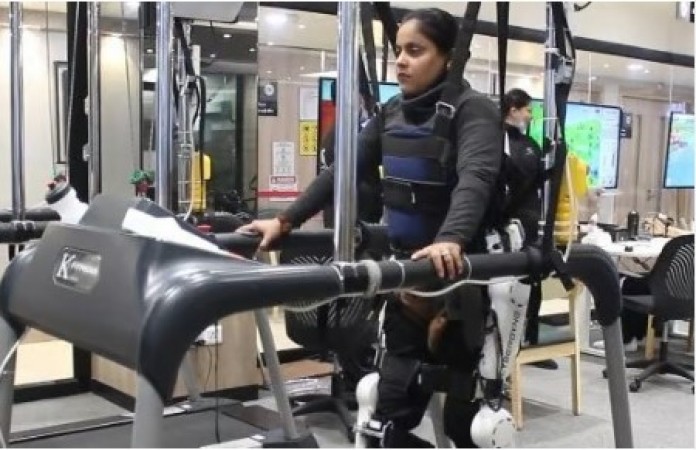
In a groundbreaking advancement, an indigenous robotic leg is set to alleviate the challenges faced by spine and stroke patients, offering unprecedented support and mobility. This innovative technology promises to transform the lives of individuals grappling with walking difficulties, ushering in a new era of independence and freedom.
Walking Impairments
Spine and stroke patients often encounter immense difficulties in walking due to muscle weakness, coordination issues, and balance disturbances. These limitations not only affect their physical mobility but also take a toll on their emotional well-being and quality of life.
Existing Solutions
While traditional assistive devices such as canes, walkers, and wheelchairs provide some level of assistance, they often fall short in addressing the specific needs of spine and stroke patients. These devices may lack the precision, adaptability, and natural movement required for optimal mobility.
Cutting-Edge Technology
The indigenous robotic leg represents a leap forward in assistive technology, integrating cutting-edge robotics and biomechanics to offer tailored support for individuals with walking impairments. Developed by a team of experts in collaboration with healthcare professionals, this revolutionary device is designed to mimic the natural movement of the human leg, providing a seamless walking experience.
Customized Assistance
One of the key features of the robotic leg is its ability to adapt to the unique needs of each patient. Through advanced sensors and algorithms, the device adjusts its movement patterns in real time, ensuring optimal support and stability during walking. Whether navigating uneven terrain or ascending stairs, users can rely on the robotic leg to provide steady and secure assistance.
Enhanced Independence
For spine and stroke patients, regaining the ability to walk independently can have a profound impact on their daily lives. The indigenous robotic leg empowers individuals to reclaim their mobility, allowing them to engage in activities they may have once thought impossible. From taking leisurely strolls in the park to performing household chores with ease, the possibilities are endless with this groundbreaking technology.
Physical Rehabilitation
In addition to improving mobility, the robotic leg also plays a crucial role in the rehabilitation process for spine and stroke patients. By providing targeted support and assistance, the device helps users build strength, coordination, and confidence over time. This holistic approach to rehabilitation promotes faster recovery and better long-term outcomes.
Continued Innovation
As technology continues to evolve, the potential for assistive devices like the indigenous robotic leg is limitless. Researchers and engineers are constantly exploring new advancements in robotics, artificial intelligence, and materials science to enhance the functionality and accessibility of these devices. With ongoing innovation, the future looks bright for individuals with walking difficulties.
Accessible Solutions
In addition to technical advancements, efforts are also underway to make assistive technology more accessible and affordable for all. Collaborations between government agencies, research institutions, and healthcare providers aim to ensure that cutting-edge solutions reach those who need them most, regardless of their socioeconomic status or geographic location.
A New Era of Mobility
With the introduction of the indigenous robotic leg, the days of struggling with walking difficulties for spine and stroke patients are numbered. This innovative technology not only provides practical support for daily activities but also instills a sense of confidence and independence. As we look to the future, the continued development of assistive technology promises to transform the lives of individuals with disabilities, opening up new possibilities and opportunities.
May the pressure of office life become dangerous for the brain? keep doing this work
Make such changes in your diet before conceiving, there will be no problem during pregnancy
Plastic bottles can increase these problems, be careful, otherwise you may have to repent later